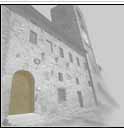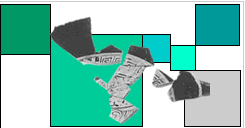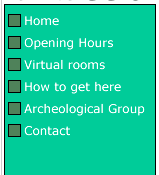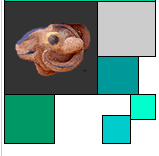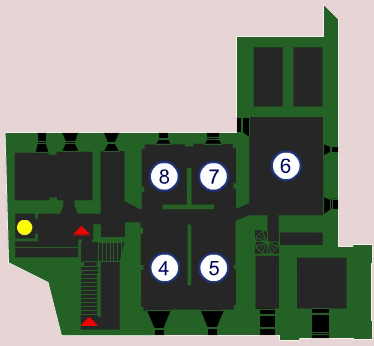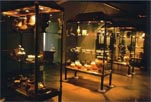|
The
most interesting archeological discovery, which is still partly
visible in the area of Colle di Val D'Elsa, isrepresented by Dometaia,
a small group of farmhouses about 4 km south-east of the town.
The first news of archeological finds in this area dates back
to the second half of the last century, but unfortunately, the
objects recovered during these digs are for the major part dispersed.
Only a part of this collection was put together at a much later
date by the National Archeological Museum of Siena, thanks to
a donation.
In November 1972, the Tuscan Archeological Superintendent, Guglielmo
Maetzke, with whom the Archeological Group of Colle had been in
touch for some time, authorised the cleaning of certain tombs,
already known of from the end of 1800, in the Etruscan necropolis
at Dometaia. From 1972 to 1978 16 chamber tombs were localised
and cleaned, but produced, as is predictable for tombs known of
for a long period of time, very little in the way of material.
Then in 1994, quite by chance, tomb number 17 came to light in
which, even though it had been violated, fragments were discovered
which enabled the reconstruction of some notable vases and a tubular
gold earring with feline protome.
The study of the tomb has produced interesting data on Etruscan
funereal architecture and also on the expanse of the necropolis,
which goes from Buliciano to Poggio ai Colli, and is therefore
much more extensive than was thought in the past, also with regard
to its use, which is much more ancient than was believed up to
now.
The disposition of the underground tombs along the new local road
has suggested the hypothesis that it would have followed, even
in ancient times, a very important main road which would have
gone from Volterra, touching Dometaia, to connect with the large
inhabited centre of Monteriggioni and then onward into the internal
area of Etruria. The types of tomb are very varied. Until now
five underground tombs of large dimensions have been recovered.
Apart from number 3, which is of circular design with a double
bench and signs of a dividing wall, the others are all of a complex
design with a central vestibule around which are linked various
chambers with benches. They represent the architecture of Archaic
houses with several rooms and a ridged roof. This is the more
aristocratic type of tomb used as a family tomb for several generations
from the VI century BC, and bears witness to the existence of
forms of aristocratic power in an area of great strategic importance.
The tombs of quadrangular or circular design of modest dimensions
belonged to the subordinate classes, and were the most common
in the whole of the Volterra area from the end of the IV to the
I century BC.
In 1998, the Council of Colle di Val D'Elsa, the Tuscan Archeological
Superintendency and the Archeological Group of Colle drew up plans
for an easily accessible archeological park which would enable
visitors to know not only the necropolis, but also the beautiful
Romanesque parish churches and the typical medieval hamlets of
the area.
The first step, taken by the Archeological Group of Colle, was
to restore and make ready the first four tombs. There is a collection
of objects recovered after the cleaning of the first 16 tombs
in a glass display case in the small room, number 7, on the first
floor of the Museum. The pieces worthy of most interest are the
two jars in 'bucchero' (a specific type of black pottery produced
by the Etruscans) and some fragments of Attic red-figure vases.
In the small room next to this, number 8, there are objects reconstructed
from fragments found in tomb number 17. Two
large painted skyphoi which are still being studied, and the earring
already mentioned, are all well worth seeing.
|

